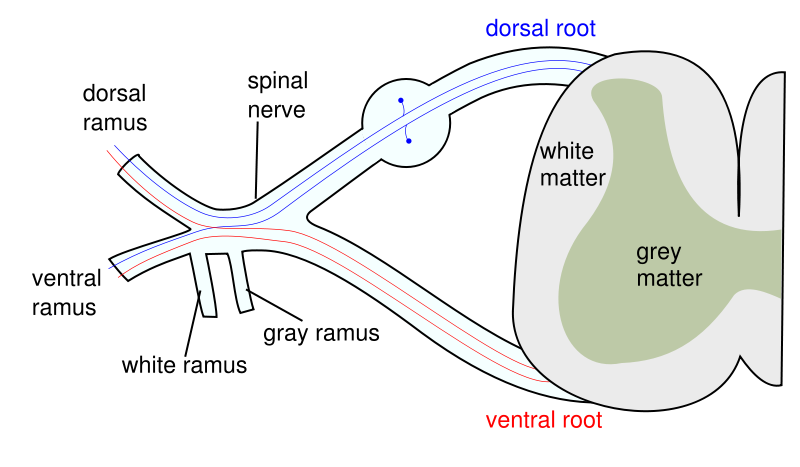Dorsal root ganglion
Template:Infobox Anatomy Please Take Over This Page and Apply to be Editor-In-Chief for this topic: There can be one or more than one Editor-In-Chief. You may also apply to be an Associate Editor-In-Chief of one of the subtopics below. Please mail us [1] to indicate your interest in serving either as an Editor-In-Chief of the entire topic or as an Associate Editor-In-Chief for a subtopic. Please be sure to attach your CV and or biographical sketch.
Overview
In anatomy and neurology, the dorsal root ganglion (or spinal ganglion) is a nodule on a dorsal root that contains cell bodies of neurons in afferent spinal nerves.
Unique unipolar structure
The axons of dorsal root ganglion neurons are known as afferents. In the peripheral nervous system, affarents refer to the axons that relay sensory information into the central nervous system and spinal cord. These neurons are of the pseudo-unipolar type, meaning they have an axon with two branches that act as a single axon, often referred to as a distal process and a proximal process.
Unlike the majority of neurons found in the central nervous system, an action potential in dorsal root ganglion neuron may initiate in the distal process in the periphery, bypass the cell body, and continue to propagate along the proximal process until reaching the synaptic terminal in the dorsal horn of the spinal cord.
Distal section
The distal section of the axon may either be a bare nerve ending or encapsulated by a structure that helps relay specific information to nerve. For example, a Meissner's corpuscle or Pacinian corpuscle may encapsulate the rendering the distal process sensitive to mechanical stimulation, such as stroking or vibration, respectively. [1]
Location
The dorsal root ganglia lie along the vertebral columna by the spine.
Embryology
The dorsal root ganglia develops in the embryo from neural crest cells.
Nociception
G protein-coupled receptor on the DRG have been associated with nociception.[2]
References
- ↑ Kandel ER, Schwartz JH, Jessell TM. Principles of Neural Science, 4th ed., p.431-433. McGraw-Hill, New York (2000). ISBN 0-8385-7701-6
- ↑ Huang CW, Tzeng JN, Chen YJ, Tsai WF, Chen CC, Sun WH (2007). "Nociceptors of dorsal root ganglion express proton-sensing G-protein-coupled receptors". Mol. Cell. Neurosci. 36 (2): 195–210. doi:10.1016/j.mcn.2007.06.010. PMID 17720533.
See also
Additional images
-
Medulla spinalis
-
-
Scheme showing structure of a typical spinal nerve.
External links
- Template:SUNYAnatomyFigs
- Histology image: 04401loa – Histology Learning System at Boston University
- Photo of model at Ohio State University
- Diagram at webanatomy.net
- Photo at uwlax.edu

